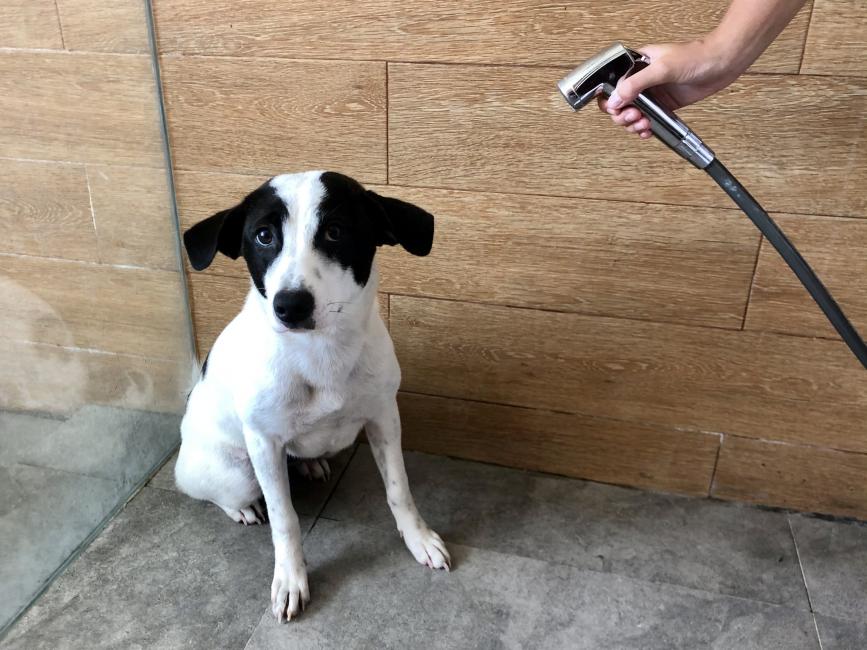If you’ve recently gone down the bidet rabbit hole, you may be wondering what the best type of bidet is for you. A handheld bidet vs bidet seat?
In this article, I cover the key differences between handheld bidets and bidet seats, including:
- Ease of installation
- Differences in features
- How the sprays differ (significantly) between the two
- Ease of use
- Price
So, without further ado:
What’s the difference between a handheld bidet vs bidet seat? The main difference between handheld bidets and bidet seats is how you operate them. Handheld bidets require you to aim the bidet manually, whereas a bidet seat has a pre-positioned wand. Handheld bidet sprayers have fewer features and are typically cheaper than bidet seats.
Handheld bidets vs bidet seats: Defined
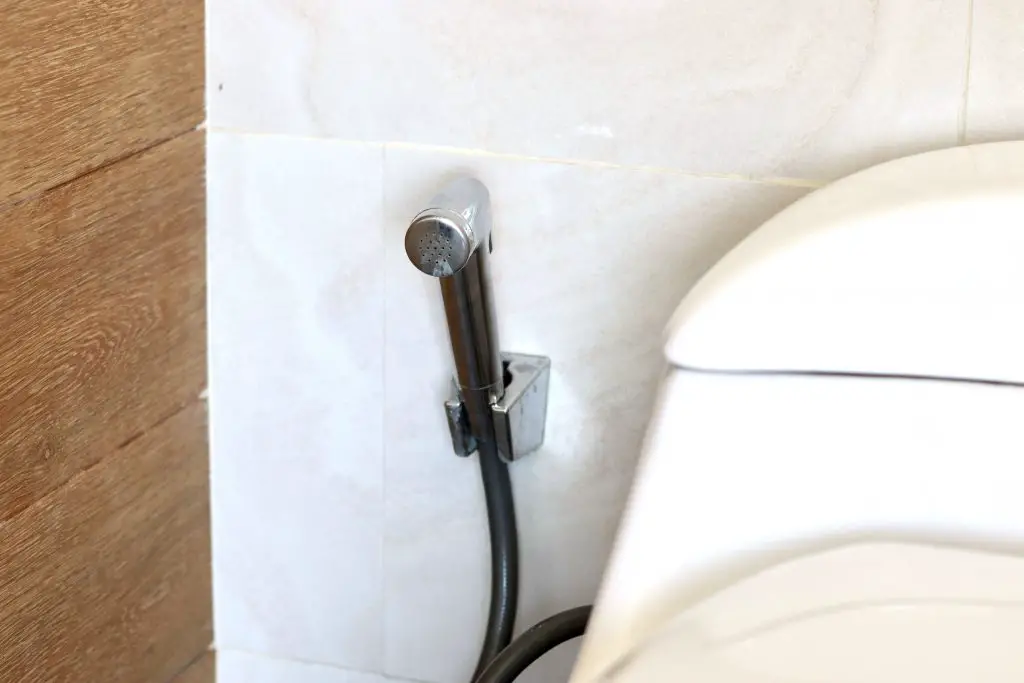
Handheld bidets (or bidet sprayers) are small showerheads that hang next to your toilet. They look just like kitchen sprayers but live in your bathroom.
Using a handheld bidet is simple.
Aim and spray. That’s it.
Bidet seats replace your normal toilet seat. They use nozzles that sit inside your toilet bowl to spray you with water. You control them via buttons on the seat (or if you have a fancy one, it will come with remote control).
Handheld bidet vs bidet seats: installation
Installing a handheld bidet is easier than a bidet seat (especially if you’re using an electric bidet).
With a hand-held bidet, there’s no need to mess around with your toilet seat. All you need to do is insert a T-connector into your water supply line and attach the bidet hose.
To install a bidet seat you also need to remove your toilet seat and mount the new seat.
This can be straightforward, but if you have a non-standard toilet shape it can present difficulties.
For an electric bidet, you’ll also need an outlet nearby to plug it into.
If you don’t, this can add a lot of hassle to the installation process.
Once your electric bidet is installed and turned on, you then have to set it up. Similar to the process you’d go through with a new phone.
Admittedly, this is always quite exciting, but it still takes time!
Handheld bidet vs bidet seat: features
A bidet seat wins this battle hands down.
Bidet seats can come with a wide range of features, from the very common self-cleaning nozzles to the more exotic automatic opening and closing lid.
Dryers, nightlights, heated seats, and massaging spray modes are the norm for electric bidet seats.
Electric bidet seats also offer hot water – a must-have if you live in a cold climate.
Handheld bidets are super simple in comparison.
They don’t come with any extra features; most are cold water only.
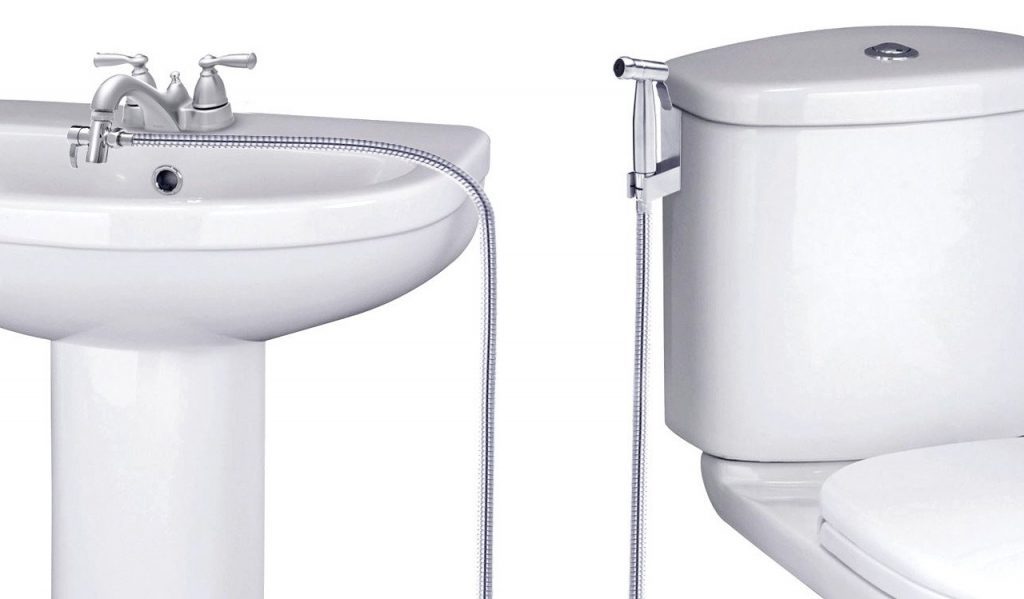
A few options offer hot water, but they require some extra plumbing (such as attaching a hose to your sink) that not everyone is up for.
I know if I tried to install a bidet hose onto my sink, my partner would have something to say about it.
Handheld bidet vs bidet seat: water pressure and spray
The water spray your bidet produces is its main attraction.
It’s what does the cleaning, so you must have a spray that suits you.
Two things affect the spray: the pressure of the spray and the shape/size of the water stream.
Let’s see how the handheld bidet and the bidet seat compare.
The water pressure
Handheld bidets are powered by your mains water supply.
This means if you have high water pressure, the bidet will have high water pressure and vice versa.
Non-electric bidet seats also tap into your mains water supply.
Electric bidet seats rely on their own internal systems to power the water spray. They aren’t reliant on the house’s water pressure.
Generally, bidet sprayers tend to have higher water pressure than electric bidet seats.
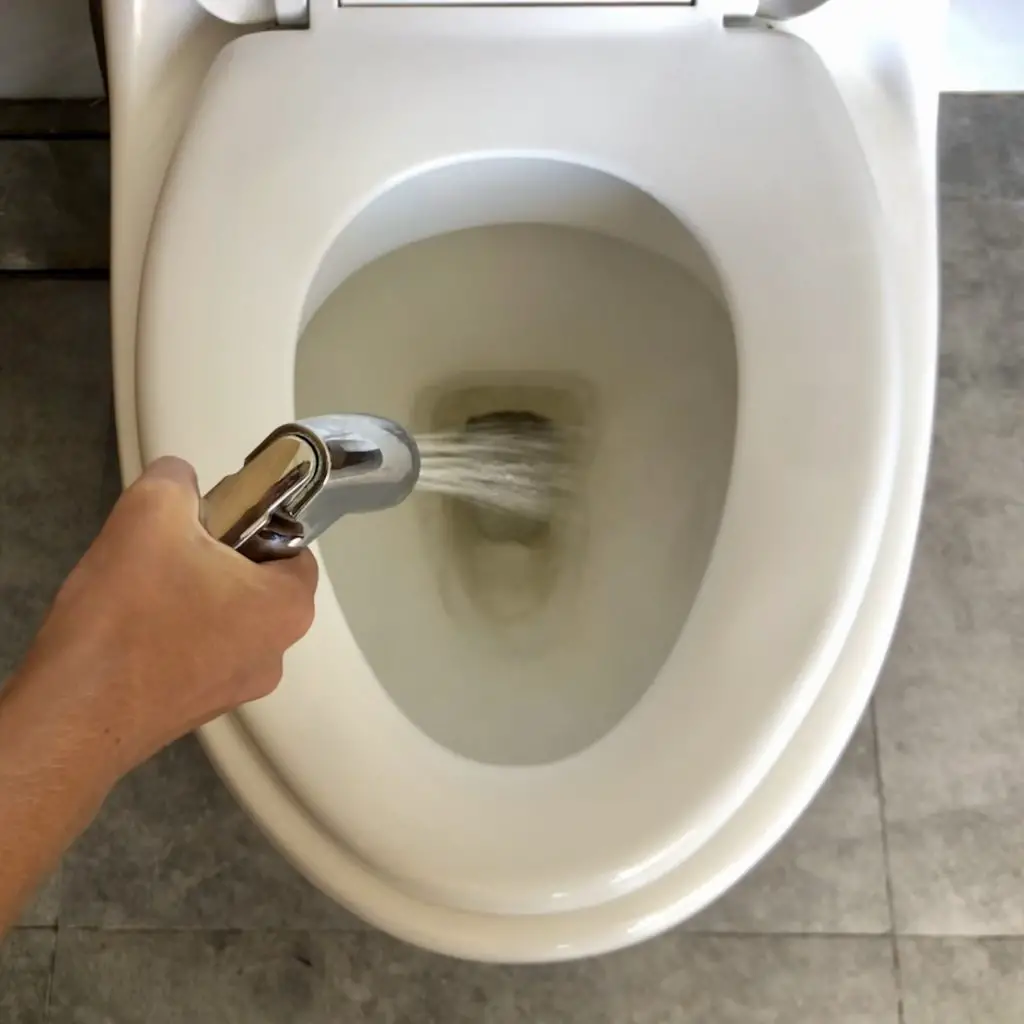
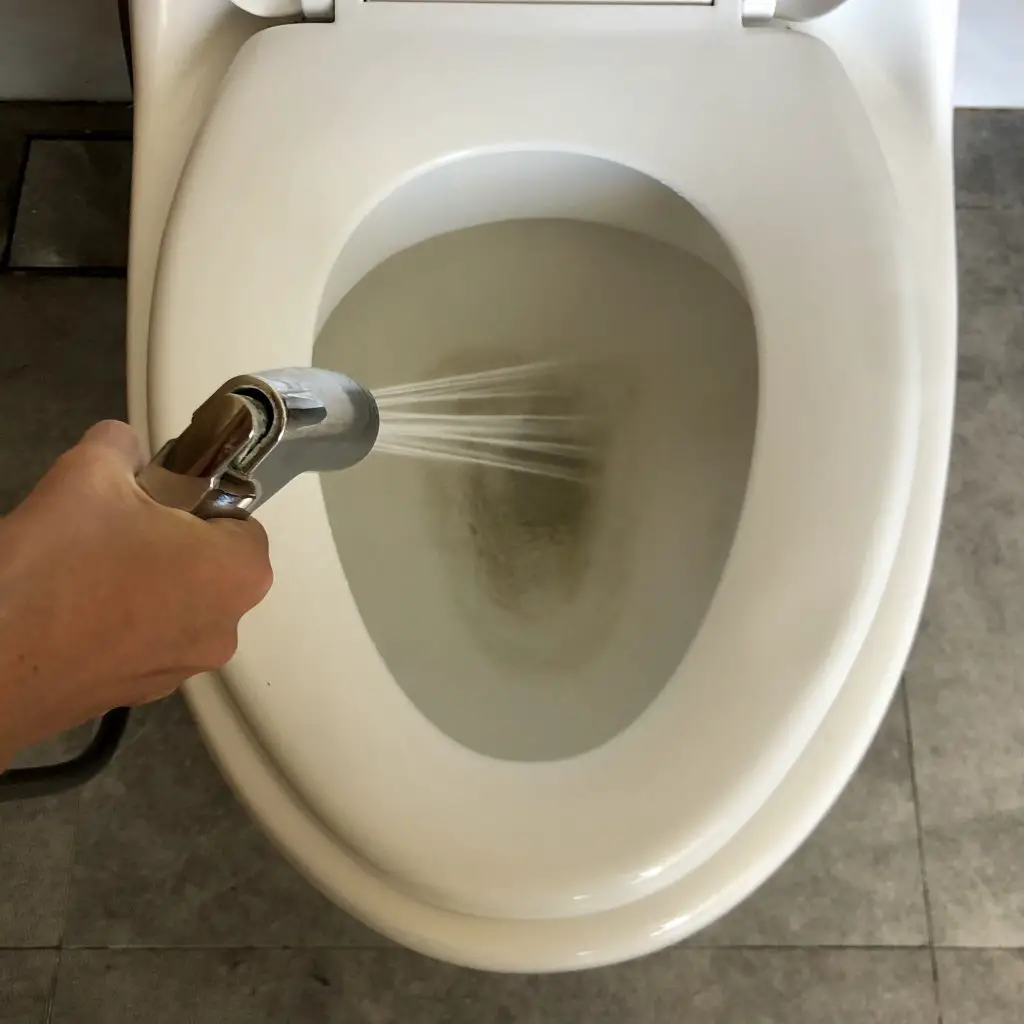
Sometimes handheld bidets can be too pressurized.
Trust me, it’s not fun having what feels like a pressure washer pointed at your bum.
But thankfully, this problem is easily fixed by installing a T-connector with a shut-off valve. Partially closing the shut-off valve will reduce the pressure.
On the other hand, electric bidet seats are unlikely to be too strong.
If you’re used to or expecting a strong spray, you may be disappointed by the spray from an electric bidet. Some people think it feels weak.
But it’s important to stress that a gentler feeling spray doesn’t mean it’s not doing a good job.
It is.
Most electric bidet seats use ‘bubble’ infused (or aerated) water streams. The air bubbles ‘cushion’ the spray and make it feel softer while not affecting its cleansing abilities.
The spray
The spray on a bidet seat is thin and targeted, while the spray from a bidet sprayer is wider and gives full back-end coverage.
The thin spray on the bidet seat can mean it’s harder to get it aiming at the right place. But once it’s well-aimed, you only get a small area wet, and you’ll dry off quickly.
With a handheld bidet, you can be sure nothing will be missed. But you’ll be a lot wetter.
Handheld bidet vs bidet seat: ease of use
Another thing to consider when choosing a bidet is the ease of use.
This can be split into two considerations:
- Is the bidet easy to position?
- Is the bidet easy to operate?
Positioning
With a handheld bidet, you completely control where you point the sprayer. You position it yourself and then spray it.
With a bidet seat, the nozzles are pre-positioned. Some models allow you to move the nozzles backward and forwards slightly, but there isn’t a big range of movement.
This means if the nozzles aren’t hitting the spot, you need to wiggle around on the toilet seat to find the right position.
But the seat provides a hands-free experience.
Your hands don’t have to go anywhere near the toilet bowl, unlike with the bidet sprayer where your hands are IN the toilet bowl.
Positioning the sprayer yourself will sound great to some people, but it’s exactly what they don’t want for others.
If you’re on the larger side, have limited movement, or have a small toilet, it can be awkward (or even impossible) for you to reach your hands around to the correct position. In this situation, pre-positioned nozzles take away a lot of stress.
Also, while the nozzles might not be in exactly the correct position, they won’t be far off. If you miss slightly it’s not a big deal. You can adjust yourself by shuffling on the seat.
If you miss a bidet sprayer, you can easily spray water all up your back and over the bathroom floor. YIKES.
Operating
Once you’ve got the bidet in position, a handheld bidet sprayer is easy to use. You just need to press the lever to release the water.
With a bidet seat, there are a lot more buttons to pick from. These can be confusing at first, and you may well end up pressing the wrong button a few times. But after a while, you’ll get used to it, and using the bidet should become second nature.
An electric bidet seat isn’t the best for a guest bathroom, though. A discrete non-electric bidet seat would be a better solution here.
Handheld bidet vs bidet seat: versatility (other uses)
One of the main advantages of a handheld bidet is that it can be used for so much more than just cleaning your bum.

A few example uses include:
- Rinsing off a muddy dog
- Cleaning diapers
- Washing off sandy feet
- Washing the toilet bowl (and bath or sink depending on how far it can reach)
And much more. Once you have one, I guarantee you find all sorts of uses for it!
It’s the type of thing you didn’t know how much you need until you have one.
Bidet seats are much more one-dimensional. They do one job – cleaning your nether regions. I was going to say bum instead of nether regions, but that ignores the fact that many bidet seats offer feminine wash modes.
Ladies, don’t forget to check out the best bidet seats with feminine wash modes.
Handheld bidet vs bidet seat: price
Handheld bidets are one of the cheapest bidet types you can buy. They range in price from $20-$40 depending on the materials used.
Electric bidet seats are more expensive since they come with more features. They range in price from around $250 for a budget option to $1500 for a top-of-the-range Washlet.
Typically, non-electric bidet seats are a lot cheaper, and $100 will get you a solid option that will last you many years.
Related: what’s the best non-electric bidet seat?
Which bidet is best for you?
Both the handheld bidet vs bidet seats are great options. They’ll help you reduce your toilet paper usage and get you feeling sparkly and clean.
Here’s a quick summary of the pros and cons of each type of bidet.
Handheld bidet pros and cons
Pros
- Cheap
- You position the nozzle yourself
- Easy to install
- High pressure, strong feeling spray (adjustable if it’s too strong)
- Multiple use cases
- No learning curve, easy to use from the beginning
Cons
- Can be awkward to position the nozzle for some people
- Lacks extra features like heated seats
- Tend to only offer cold water
- Requires significant movement
Bidet toilet seat pros and cons
Pros
- Loads of extra features like self-cleaning wands, dryers, and deodorizers
- Hands-free experience
- No need to move/twist/stretch on the toilet
- Aerated spray (gentle but effective)
Cons
- More expensive
- Harder to install
- No other uses
In Summary
If you’re on a budget and want something quick and simple to install then the best choice is a handheld bidet. They’re also good for people who want something with a strong spray and want to be able to position the spray themselves.
Bidet seats are best for people who want a more luxurious experience and don’t mind spending more. If you want hot water and extra features, get a bidet seat. They’re also great for people with limited mobility who don’t want to be faffing around trying to position a bidet hose.
I hope you’ve found these key points helpful in choosing a handheld bidet vs bidet seats!
